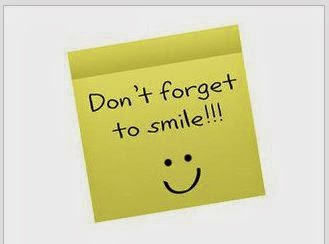NEXT TIME:
Building a Prompt and Citing Sources to Argue for A.F. Skate Park Repair
Creating your own graphic organizer
Computer Lab to find answers for your questions about your historical fiction book.Mark your calendars:
SAGE Testing for A-Day: February 9 and 11 -- Informative and Argument Writing
SAGE Testing for b-Day: February 4 and 6 -- Informative and Argument Writing
Come well-rested, well-nourished, and well-hydrated.
If you haven't signed up for your January/February Book-of-the-Month, do it right away! You have a zero on your grade for that. Book Assessments Due February 11/12
Another example for the book assessment:
I read Secret of the Andes by Carol Ann Nolan.
As you read, look for possible facts about the real time,
place, or events in your book.
For at least five
of them, look them up in reliable sources and record what you find. Also record where you found your
information. Remember -- no Wikipedia or ask-a-question sites.
Page(s)
found
|
Fact as found
in the book:
|
What I found out when I looked it up:
|
I used this source:
|
|
1
|
The main characters travel to the salt ponds to harvest salt.
|
About 40 kilometers from Cusco there is a place where salty springs flow out of the mountains. Farmers create ponds where the water gathers and evaporates. Anyone can harvest salt there.
|
http://www.happinessplunge.com/2012/06/maras-peru-harvesting-salt-for-the-incan-empire-and-modern-day-peru/
https://www.youtube.com/watch?v=_q6B35rApR0 This is a video by a family who visited the salt ponds. |
|
2
|
The main character (Indian descendent of the Incans) walks to Cusco, a city ruled by the Spanish.
|
Cusco is a city in southeastern Peru near the Valley of the Andes mountain range. It was built by the Incas, but after the Spanish conquered it, they built Christian churches and Spanish palaces all over the city.
|
http://whc.unesco.org/en/list/273
This is the World Heritage Center of the United Nations Educational, Scientific, and Cultural Organization. |
Book Assessments Due February 11/12
We will be in the computer lab on January 30/February 2 for you to use nonfiction sources to look up the answers to your questions about your fictional books.
-------------------------------------------------------------
TODAY'S ACTIVITIES:
______________________
1. Creating Test Vocabulary Flash Cards -- work in your groups.
Groups for Today
If you are absent, here are the cards and words to use on the backs of the cards. Match definition to word.
--- Get together into your groups.
--- Cut out the vocabulary flash cards.
--- Match the definitions to the listed words, and place the appropriate word on the BACK of ech flashcard.
--- You may ask the teacher for help with two.
--- Put your flashcards into order, paperclip them together, and turn them into the top wire basket AT THE END OF CLASS.
Helps to learn some testing vocabulary words:
https://www.youtube.com/watch?v=DdsaLduyChw
https://www.youtube.com/watch?v=xKSMVdYQRmA
2. Citing Sources -- Spelled C-I-T-E
Read and comment on brief arguments. Comment on the argument or on the comments.
Practice Citing the Sources.
Examples:
Susan Fiske says, "By all means, hold the door open -- but for everyone!"
The best idea is to "hold the door open -- but for everyone!" (Fiske)
____________
3. Finish outline for Mistakes and Discoveries. -- if time
4. Practice with flash cards and take a quick quiz.
________________________________________________________ A1 to here
4. Skate Park and RAFTS and Citing Sources -- Counterclaims?
Reminders:
RAFTS
Role
Audience
Format
Task
Strong Key Words
ARMS [Use your ARMS to Revise]
Add
Remove
Move around
Substitute
A.R.M.S. Revision Strategy
 SMILES [Use your SMILES to Edit Your Work.]
SMILES [Use your SMILES to Edit Your Work.]Sentences -- Make sure each sentence has a subject and an action.
Marks -- End each sentence with a punctuation mark.
Indents -- Indent each new paragraph.
Letters -- Start each sentence with a capital letter.
Editor -- Use any editing program available, and check your own spelling, etc.
(Spelling -- Double-check for the words you tend to misspell.)
Organizing Your Essay:
Graphic organizer for an argument essay FRONT
Introduction with Central Idea/CLAIM
|
Third reason (major support/evidence)
|
First reason (major support/evidence)
|
Addressing a counterclaim
|
Second reason (major support/evidence)
|
Conclusion
|
Graphic organizer for an argument essay BACK
RAFTS
|
Notes on passage (or on notepad)
|
ARMS
|
Notes on passage (or on notepad)
|
SMILES
|
Notes on passage (or on notepad)
|
Graphic organizer for an information essay FRONT
Introduction with Central Idea (Let your reader know what
your three reasons are.)
|
Optional -- Third reason (major support/evidence)
|
First reason (major support/evidence)
|
Conclusion
|
Second reason (major support/evidence)
|
Graphic organizer for an information essay BACK
RAFTS
|
Notes on passage (or on notepad)
|
ARMS
|
Notes on passage (or on notepad)
|
SMILES
|
Notes on passage (or on notepad)
|

